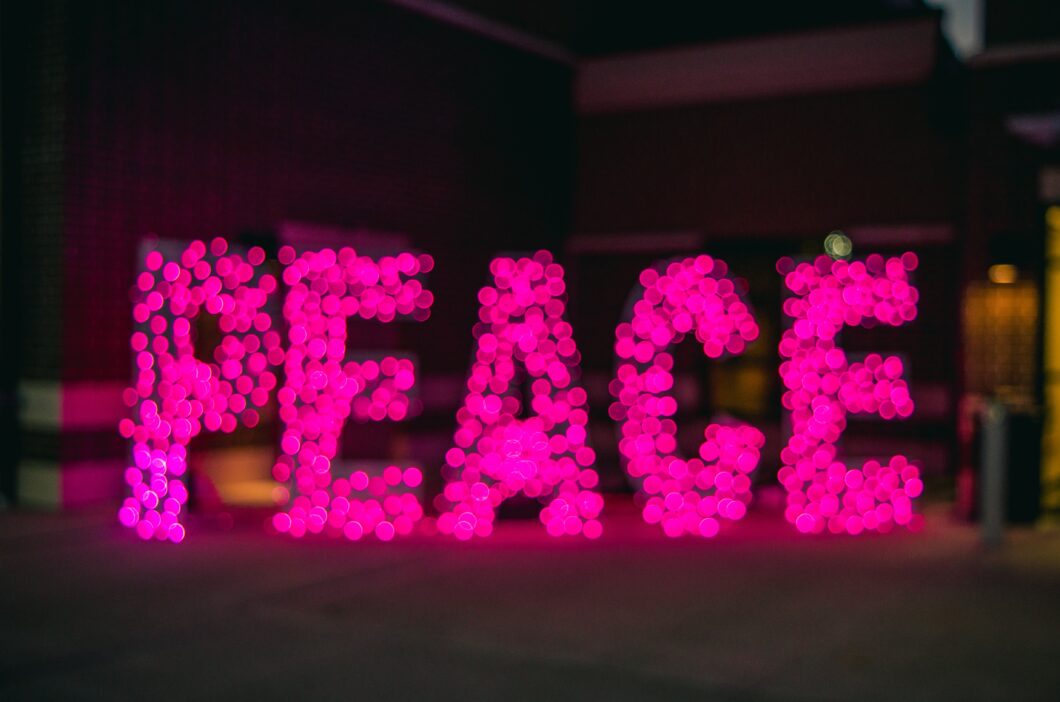Peace of mind, or inner peace, is a major consideration in mental health. It affects us all from those in high-stakes jobs like professional athletes to children who are learning how to manage challenges in life. This is because we look at the bigger picture in life, one common desire that every person on this planet has is the desire to feel at peace.
We spend our lives learning how to achieve and maintain mental peace. Difficulties in our lives and in our world can make inner peace feel more elusive than attainable. However, with a little effort, discipline, and understanding, we can learn how to live in harmony within ourselves.
The Foundation of Peace of Mind for Athletes
Peace of mind is a state often sought but rarely fully understood, especially in the high-stakes world of professional athletics. For athletes, achieving peace of mind isn’t just about feeling relaxed; it’s about cultivating a mental environment where focus, confidence, and resilience thrive.
In the realm of sports, peace of mind translates to a sense of mental clarity and calmness that enables athletes to perform at their best, regardless of the pressure or competition they face. It’s about being in a mental zone where distractions fade away, allowing for full immersion in the task at hand.
However, reaching this state isn’t just about the absence of stress or anxiety; it’s about actively managing these elements. Athletes often face unique challenges such as performance pressure, public scrutiny, and a relentless pursuit of excellence. These challenges can create mental clutter that disrupts focus and impairs performance.
Strategies for Generating Peace of Mind
Again, peace is not about the absence of challenges, but rather your approach to handling them. Here are some strategies to consider:
- You can feel negative emotions and still feel at peace. In the book, The Power of Now, author Eckhart Tolle reminds us that, “Happiness depends on conditions being perceived as positive; inner peace does not.” What he means here is that we can have negative emotions like sadness, but if accept things as they are, we do not have to suffer. Acceptance allows us to feel at peace, even when coupled with negative emotions.
- Your peace is not up for a vote. My spiritual life coach gave me some of the best advice on peace that I have ever received. Many times we make decisions for other people thinking it will bring us peace. The problem is that we are denying our true wants and desires, which only creates inner conflict. This creates an added layer to the issue because not only are you shutting yourself down, your peace then becomes dependent on the responses and actions of other people as well. Stop letting other people have a vote in your peace.
- Listen to your wants and needs. To resolve the conflict of giving the power of your peace away, you have to listen to yourself. Your intuition and desires are emotionless. It is a flat lined inner knowing that feels similar to a factual bodily function like, “I have to pee.” It’s not up for discussion, it just is. Check out the meditation exercise below to help you get quiet and balanced so you can recognize what you really want.
- Have self-compassion in setting your peace boundaries. True inner peace requires both acceptance and boundaries. A key to being successful in this is to have self-compassion. You are likely doing your very best with the information and skills that you have. You may also need to learn a new lesson, which sometimes isn’t easy, but it doesn’t have to rob you of your peace either. Accept what is but also accept that you’re doing your best. This might mean having to set and keep a boundary to maintain your personal house of peace. You know your needs; honor them and love them.
- Learn to trust. Trust is another big factor in generating inner peace and improving your mental wellbeing.
20 Affirmations for Inner Peace
- I am at peace with who I am as an athlete and a person.
- Every breath I take fills me with calm and peace.
- I choose to respond to challenges with calmness and peace.
- With each breath, I release tension and embrace tranquility.
- I am grounded in the present moment, which is peaceful and secure.
- I am in harmony with myself, my goals, and my environment.
- Every day, I find more peace within myself.
- I choose to let go of what I cannot control and accept what is here and now in the present.
- Inner peace is my natural state, and I return to it effortlessly.
- With each breath, I release stress and welcome peace.
- I am surrounded by an aura of calmness that helps me stay composed.
- I find peace in my achievements and learn from my setbacks.
- Peace within me radiates in all aspects of my life.
- I am a beacon of tranquility in both calm and challenging times.
- My mind is clear, my heart is at peace, and my body is relaxed.
- In stillness, I find my true strength and peace.
- I trust the process of life and find peace in its flow.
- Peace flows through me with every heartbeat.
- I am grounded in the present, where peace is always within reach.
- My inner peace is unshakable, even in the face of competition, pressure, and challenges.
Using affirmations regularly, not just in moments of stress, but in your everyday routine, can help in fostering a deep sense of inner peace. This practice not only enhances mental well-being but also positively influences performance by allowing for a more centered and focused approach to challenges.
5- Minute Meditation Exercise for Peace of Mind
Find a comfortable and quiet place to sit or lie down. Allow your hands to rest gently on your lap or by your sides. Close your eyes and take a moment to settle into this space.
Minute 1: Begin by taking a deep, slow breath in through your nose, filling your lungs and your belly. Hold it for a moment, then exhale slowly through your mouth, releasing all the air from your belly. Allow the exhale to be longer than the inhale to really slow down. Feel your body relax with each exhalation. Do this three to five times.
Minute 2: Now, let your breathing return to its natural rhythm. Pay attention to each breath as it enters and leaves your body. Notice the sensation of the air passing through your nostrils, the rise and fall of your chest, and the gentle expansion and contraction of your abdomen.
Tip: As my mentor likes to remind me, let your breath lead your mind, instead of your mind lead your breath. Meaning, use your concentration to focus on your breath’s natural flow instead of using your thoughts to control your breath. This helps you relax your mind and go into your body.
As thoughts come into your mind, acknowledge them, but do not engage with them. Know that’s it’s normal to have thoughts interrupt your meditation. Imagine each thought as a leaf floating down a gentle stream, drifting away from you. Return your focus to your breath each time your mind wanders. Each time you refocus on your breath, you are strengthening your meditation practice and deepening your relaxation.
Minute 3: Visualize a radiant light of peace emanating from your heart with each breath. Choose the color of this light. With every inhale, this light grows brighter and more potent, filling your entire being with a sense of calm and tranquility.
Minute 4: Continue to breathe deeply and evenly, allowing the stillness to grow within you. Each breath brings you deeper into a state of peace. Feel the slowing down of your thoughts, the relaxing of your body, and the calming of your emotions. Letting go a little bit more with each breath, feeling your body become less and less tense, your shoulders relaxing, etc.
Minute 5: Silently repeat to yourself, “With each breath, I invite peace and stillness into my mind and body. I am calm, centered, and at peace.”
Repeat this several times as you enjoy the energy of the peaceful light and the words of affirmation. Give yourself permission to really take this time to enjoy this space. There is nowhere to go and nothing to do, except to be at a place of stillness and peace for just a few minutes. Soaking it all in.
As this meditation comes to a close, take a few more deep breaths, savoring the feeling of tranquility and stillness you’ve created. Gently wiggle your fingers and toes, bringing awareness back to your body. When you feel ready, slowly open your eyes.
Take a moment to express gratitude for this time you’ve given yourself, carrying this sense of peace with you throughout your day.
With a variety of strategies from setting peace boundaries to self-compassion to honoring your true wants and needs to shifting your mindset with affirmations and meditation, inner peace is within reach.

